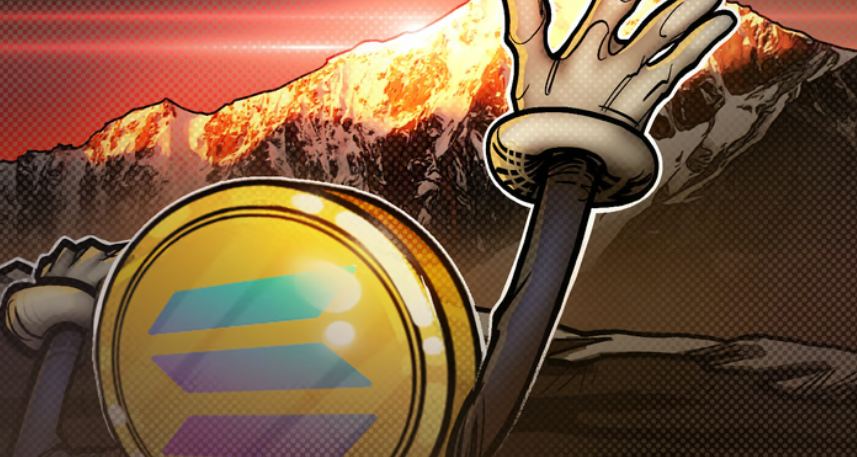SOL struggles to reclaim $145, but Solana network fundamentals remain solid
Solana’s onchain and derivatives metrics show no signs of stress, possibly paving the way for a rally to $160.

SOL (
SOL

$140
), the native token of the Solana network, has been unable to close above $145 since July 3. This lackluster performance can be partially explained by decreased investor interest in cryptocurrencies, which caused the sector’s aggregate market capitalization to drop by 5% in nine days. Despite this, SOL underperformed its competitors between July 3 and July 12, trading down 7.8%, while BNB (
BNB

$532
ETH

$3,157
Traders now fear that SOL’s bearish momentum will continue, even if the broader cryptocurrency market recovers some of its losses. However, Solana’s onchain metrics and SOL’s derivatives indicate that a reversal may be underway, paving the way for a bull run above $160, last seen over five weeks ago.
Solana TVL is head to head with the vice-leader BNB Chain
Some Solana SPL tokens drastically underperformed, which also explains the reduced demand for SOL. When Solana ecosystem participants lose money, less money circulates in its decentralized applications, consequently negatively impacting the demand for SOL. Highlights between July 3 and July 12 include a 24% decline in Dogwifhat (WIF), 18% losses in Helium (HNT), and an 18% correction in Jito (JTO).
In the grand scheme of things, SOL remains the fourth largest cryptocurrency, excluding stablecoins, boasting a $65 billion market capitalization. To put things in perspective, competitors Toncoin (TON) hold $18.4 billion, Tron (
TRX

$0.1403
) stands at $12 billion, and Avalanche (
AVAX

$26.24
Advertisement
Trade smart with Markets Pro instant alerts. Claim your 65% discount now!

According to DefiLlama data, BNB Chain had more than twice Solana’s TVL by the end of 2023. The $2 billion gap favoring BNB Chain is now gone, meaning traders are deploying significantly more capital on the Solana network. Solana’s highlights include liquid staking Jito, holding $1.6 billion in deposits, followed by Marinade with $1.1 billion, and Kamino, also nearing $1.1 billion in TVL.
Tron holds the second position in TVL terms with $7.6 billion, but 72% of that comes from a single decentralized finance (DeFi) application, JustLend. Analysts have strong concerns given that 94% of its deposits come from a wrapped version of Bitcoin, which lacks solid evidence of reserves. In essence, Solana competes directly with BNB Chain for the second place in deposits.
Solana network activity grew in terms of users and volumes
In terms of decentralized applications (DApps) activity, Solana is far from being a top contender, but its metrics improved over the past seven days while most competitors faced declines.

Data indicates that Ethereum, BNB Chain, and Polygon experienced a decline in the number of active users, while Solana gained 19% over the past seven days. Similarly, Solana DApps volumes totaled $703 million in the same period, a 12% increase over the previous seven days. Meanwhile, the market leader competitor, Ethereum, faced a 37% decline in volumes.
Related: Crypto trading volume to exceed $108T in 2024, with Europe in the lead
Solana’s decentralized exchange Raydium gathered an impressive 1.71 million active addresses in seven days, a 39% increase. In comparison, BNB Chain’s leading DApp, Move Stake, accounted for 198,570 active addresses over the same period.
Lastly, one should analyze SOL’s futures markets. Perpetual contracts, also referred to as inverse swaps, incorporate an embedded rate recalculated every eight hours. Essentially, a negative rate indicates that shorts (sellers) are using higher leverage.

Notably, the eight-hour funding rate for SOL turned negative between July 5 and July 6, but the indicator is presently near zero, indicating balanced demand between longs (buyers) and shorts. While it is impossible to determine what might cause SOL investors to regain confidence and push its price back to $160, on-chain and derivatives metrics show no signs of stress.

- AI-CrypTo platform provides you with the safest, most stable and most profitable cryptocurrency automatic quantitative trading system! With a minimum deposit of 10 USDT, you can activate your investment account and enjoy stable returns and flexible withdrawals! 💵
- Each model has a different rate of return, choose a higher level of investment to earn more! AI quantitative returns range from VIP1 to VIP11, with daily returns as high as 40.9%! The more you invest, the greater the return! 💸


 download
download download
download website
website